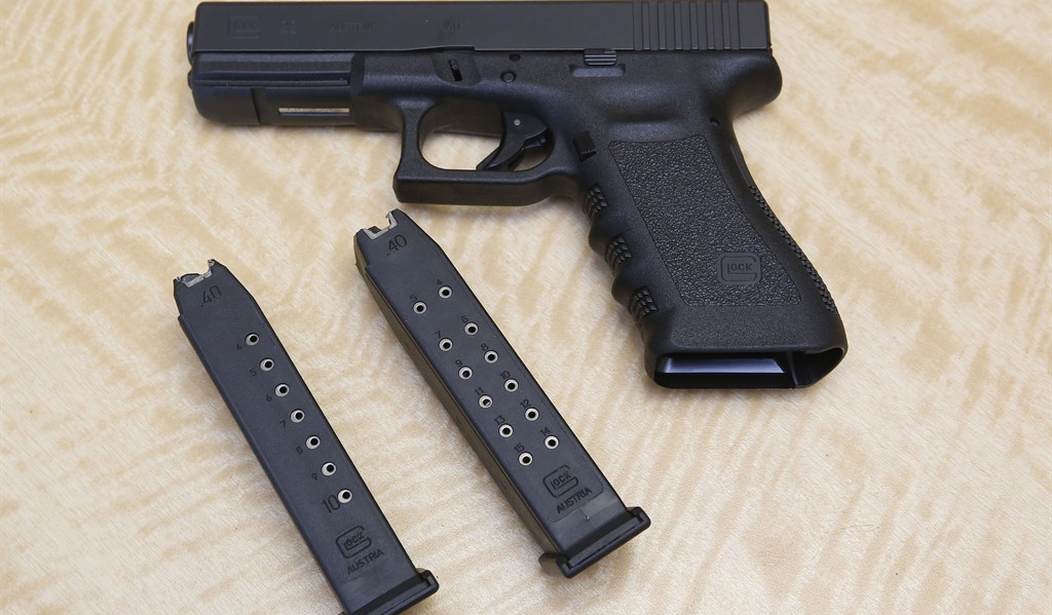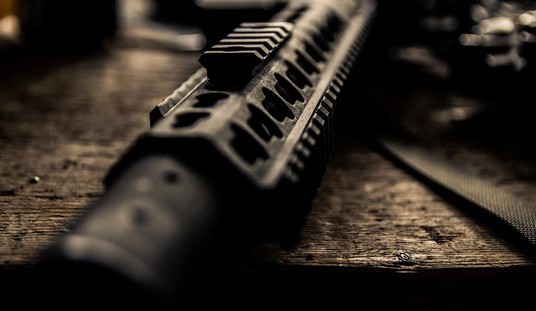I don't want to say that it's a foregone conclusion that the en banc panel of Ninth Circuit judges who were a part of today's oral arguments in Duncan v. Bonta will reverse previous decisions and uphold California's ban on "large capacity" magazines, but the odds of the panel concluding that the ban violates the Second Amendment is roughly the same as you or I winning both the Powerball and Megamillions lotteries in the same week.
The Duncan case has been kicking around the Ninth Circuit since 2017, and the appellate court has already ruled once before that the state's prohibition on ammunition magazines that can hold more than ten rounds is constitutional. An appeal of that decision was pending before the Supreme Court when it issued its opinion in Bruen, and Duncan was one of four cases that SCOTUS granted, vacated, and remanded back to lower courts for a do-over in light of Bruen's findings.
The Ninth Circuit kicked the case all the way down to trial court rather than immediately up the case, and last fall U.S. District Judge Roger Benitez once again concluded that the ban is a violation of the Second Amendment. The Ninth Circuit almost immediately stayed Benitez's decision, and in an unusual move announced that it would skip the normal three-judge appellate panel and instead hear California's appeal en banc.
The only good thing about that decision is that it should expedite Duncan's return to the Supreme Court, though after several members of today's panel suggested this case should be heard by a megapanel consisting of EVERY active judge in the Ninth Circuit who knows if that will be the case. And after today's oral arguments, it's almost certain that today's en banc panel, which comprised 11 of the Ninth Circuit's judges will rule in favor of California, though what rationale the appellate court will use is still up for debate.
One of the first questions the judges wrestled with today is whether or not magazines are "arms" that are protected by the Second Amendment or mere accessories that can be regulated without stepping on our right to keep and bear arms. CalDOJ attorneys argued that magazines aren't "arms" at all, but even if they are, "large capacity" magazines are "dangerous and unusual", which means they can be prohibited without infringing on our 2A rights.
The CalDOJ attorney asserted that the phrase "dangerous and unusual" encompasses two categories of weapons; those that are dangerous and those that are unusual, both of which are (in his view) unprotected by the Second Amendment. From a legal perspective that doesn't make any sense, since virtually all firearms are "dangerous" weapons. And contrary to the state's claim, the Supreme Court elaborated on that phrase in the Bruen decision and made it clear that the phase refers to a single category of weapons that are both dangerous and unusual.
At most,respondents can show that colonial legislatures sometimes prohibited the carrying of “dangerous and unusual weapons”—a fact we already acknowledged in Heller. Drawing from this historical tradition, we explained there that the Second Amendment protects only the carrying of weapons that are those “in common use at the time,” as opposed to those that “are highly unusual in society at large.” Whatever the likelihood that handguns were considered “dangerous and unusual” during the colonial period, they are indisputably in “common use” for self-defense today. They are, in fact, “the quintessential self-defense weapon.” Thus, even if these colonial laws prohibited the carrying of handguns because they were considered “dangerous and unusual weapons” in the 1690s, they provide no justification for laws restricting the public carry of weapons that are unquestionably in common use today.
The Second Amendment protects the carrying of arms that are in common use, not those that are "highly unusual in society at large." That would undoubtedly encompass "large capacity" magazines as well as the semi-automatic firearms (both handguns and long guns) that can accept those magazines... at least if the Ninth Circuit accepts that magazines are, in fact, arms and not accessories.
Interestingly enough, the CalDOJ attorney suggested that "some type of magazine" might fall under the Second Amendment's protections, but not "large capacity" magazines... though he struggled to explain why a ban on an 11-round magazine would be okay but a ban on a 9-round magazine could be problematic.
That led to a great line of questioning from Judge Lawrence Van Dyke, who has taken a dim view of California's gun control laws in the past.
For the first time, California says it doesn't think it could constitutionally ban all semi-automatic weapons.
— Firearms Policy Coalition (@gunpolicy) March 19, 2024
VanDyke had fired off another zinger when the plaintiffs' attorneys were being questioned by the en banc panel.
Judge VanDyke says that if mass shootings went down but regular crime went way up, California's logic would allow it to ban guns in general
— Firearms Policy Coalition (@gunpolicy) March 19, 2024
One of the first questions confronting the plaintiffs was another issue that the Supreme Court has already addressed.
Multiple judges ask the plaintiffs whether guns are only protected if they're commonly used for self-defense (rather than commonly used for other lawful purposes)
— Firearms Policy Coalition (@gunpolicy) March 19, 2024
In Heller, the Court talked about “arms ‘in common use at the time’ for lawful purposes like self-defense”. If self-defense was the only lawful purpose for owning a firearm, SCOTUS wouldn't have discussed "purposes" or referred to self-defense as the "core" purpose of the Second Amendment.
Based on the Court's language it's clear that there are other lawful purposes to keeping and bearing arms beyond self-defense, and while the justices haven't had the opportunity or inclination to flesh out what those other purposes might be it can reasonably be assumed that activities like hunting, target shooting, and firearm training would be included in the Court's definition.
When the Ninth Circuit concluded in November, 2021 that California's magazine ban was compatible with the Constitution, it based its decision on applying "intermediate scrutiny", finding that the magazine ban was a "reasonable fit for the important government interest of reducing gun violence." The panel went on to state that the statute "outlaws no weapon, but only limits the size of the magazine that may be used with firearms, and the record demonstrates (a) that the limitation interferes only minimally with the core right of self-defense, as there is no evidence that anyone ever has been unable to defend his or her home and family due to the lack of a large capacity magazine."
Intermediate or even strict scrutiny is off the table now that the Court has reiterated that the "text, history, and tradition" test is the proper way to determine the constitutionality of any given gun law. Since California has been unable to show a history or tradition of limiting magazine capacity for self-defense or other lawful purposes, my guess is that the Ninth Circuit panel will conclude this time around that magazines are not, in fact, "arms" that fall under the Second Amendment's protections.
The panel's opinion is almost a foregone conclusion, but the timing of its decision is still crucially important. As I mentioned earlier, this case has been around for almost seven years now, and it's ripe for review from the Supreme Court. Let's hope the Ninth Circuit doesn't sit on its decision for a year or more before allowing the case to be appealed to SCOTUS... or even worse, keeping their decision under wraps for months and then deciding that an en banc mega-panel needs to weigh in before the highest court in the land can hear Duncan.
You can check out today's oral arguments for yourself in the video window below.








